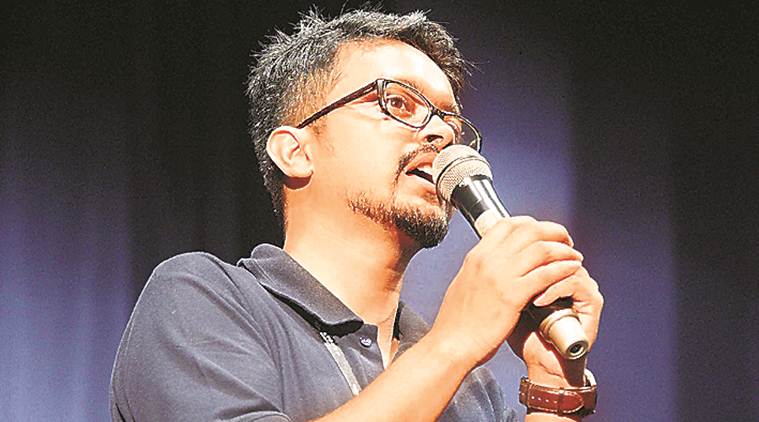 Arijit Mallick, founder and director of training at Lydnow
Arijit Mallick, founder and director of training at Lydnow
On a table is a lamp that can be operated from a mobile phone, using Wi-Fi. Next to it are skeletons of robots, which can fight each other in a sumo wrestling ring. Techies, who are not yet out of school, have created these. At Lydnow, an edutech start-up based out of Baner in Pune, students, aged between five and 22, are engrossed in playing with technology, from electronics to programming. As the company gets ready for the foundation summer courses, where new groups of students will be introduced to the magic of technology, Arijit Mallick, founder and director of training at Lydnow, talks to The Indian Express about taking science to the next level. Excerpts from an interview:
How does the constantly-changing ecosystem of technology drive your curriculum?
Any technology begins its journey in some university with a PhD scholar doing some research and thinking of a brighter future. From there, it would take about 10 years for the technology to become mainstream, ie, adopted by people as part of their daily lives. For instance, 3D printing dates back to 1984 but it was only after 25 to 30 years that we could use it on our desktops. That was how it used to be. What has happened is that current future technologies in laboratories are no longer going to take 25 years to become mainstream. For something to start becoming mainstream in three to five years is a drastic change. And so, mainstream education system needs to become equipped to adapt. We feel that students should have exposure to, knowledge of, and access to relevant skill sets in technologies that fit with present and future scenarios. Our curricula in robotics, automation, 3D printing, drones, IoT (Internet of things) and machine learning aims at facilitating this journey for students.
How do you take students through these technological advancements?
The earliest group of children we start working with are six to nine years old. We build visual recognition of components and aim to generate curiosity about technology among them. They make fun projects to start interacting with electronics, mechanics and elementary coding and also develop much-needed motor skills. The group of children aged 10 to 15 is where the majority of our work happens. They want to understand how things work, and so, we start with a programme called Robocurious in our robotics vertical. It facilitates a grounding in electronics, mechanics and basic automation. They make their first robot, sensors and understand how sensor-based automation works. From these students, we select those who can be invited for long-term programmes that extend to over two academic years. Courses that follow are Robofunda, Robopro, Robotize and Roboreveal, each roughly 40 to 50 hours long and engages students for four months or so. First, we build good know-how and skill set in essentials of electronics, then their focus becomes designing mechanical systems for robots, and lastly they learn how to program complex robotic systems. The phased grooming develops modern skills like PCB (printed circuit board) designing, 3D CAD (computer-aided design) and hardware programming. We conduct the foundation courses during the summer vacation, where we also identify students who have the potential to enter long-term courses.
Why are schools unable to keep up?
The education industry is drastically trying to keep up. If you look at an average science teacher in a school today, they have their plates full. They have to align themselves with the school’s agenda to get good results and they take work back home, which leaves them with little time to work on their own self-development. As technology development picks up pace, we need people who have been a part of the industry to come back and contribute. I saw this as a massive opportunity as the education industry is gasping for breath. Even if the college or university has the intent, it takes years to come up with a constructive system to facilitate change. We, at Lydnow, unlike schools are not burdened with the need for children to pass examinations. We can focus on them to become updated with technology and developing relevant skill sets that could increase their employment opportunities or give them a base to become future entrepreneurs.
What is the size of the edutech industry?
The edutech market in India is set to become a $2-billion industry by 2021. We were formalised in 2014, entirely bootstrapped. In the last five years, we have doubled every year in terms of revenue. We have not yet become an aggressively sales-driven company. Our growth has been organic because the word of mouth has worked well for us. We have reached a phase where constructive and rapid expansion is in the horizon.
Technology has also changed children in the last few years.
A Class VII student today has a sense of what she likes and does and what she wants to do or doesn’t. This idea is strong, facilitated by our generation of parents taking the risk of giving them independence and freedom of choice. Their intent is correct but, at the same time, parents and teachers have to guide this energy in a constructive manner. We have noticed, over a decade, that students are also losing the ability to focus on one thing at a time and master it. We are living in the one-click-to-anything age. There is too much to choose from and, therefore, there is a need to help kids make the right choice. Unfortunately, education is also sort of becoming like fast food and parents want children to do everything at once.